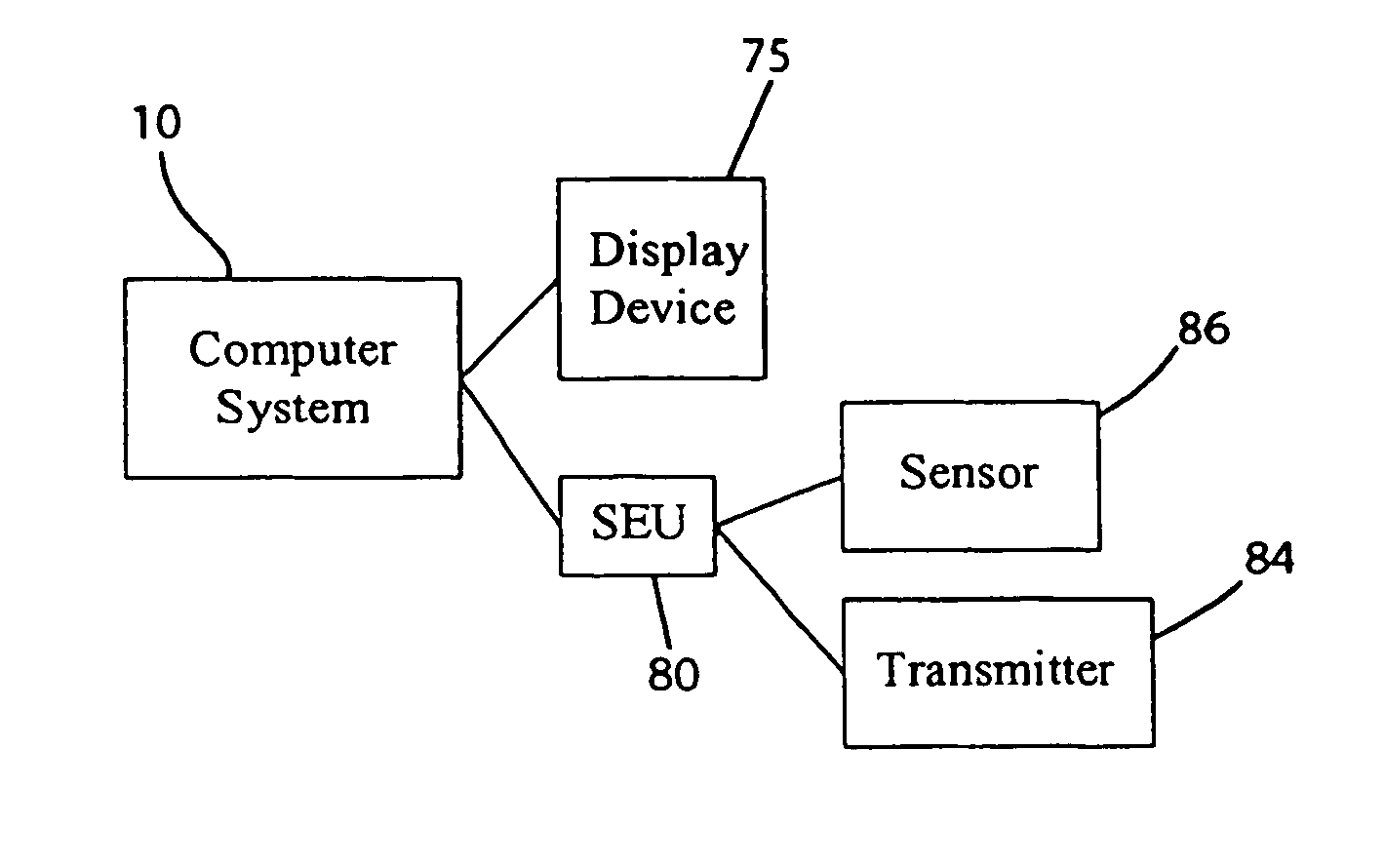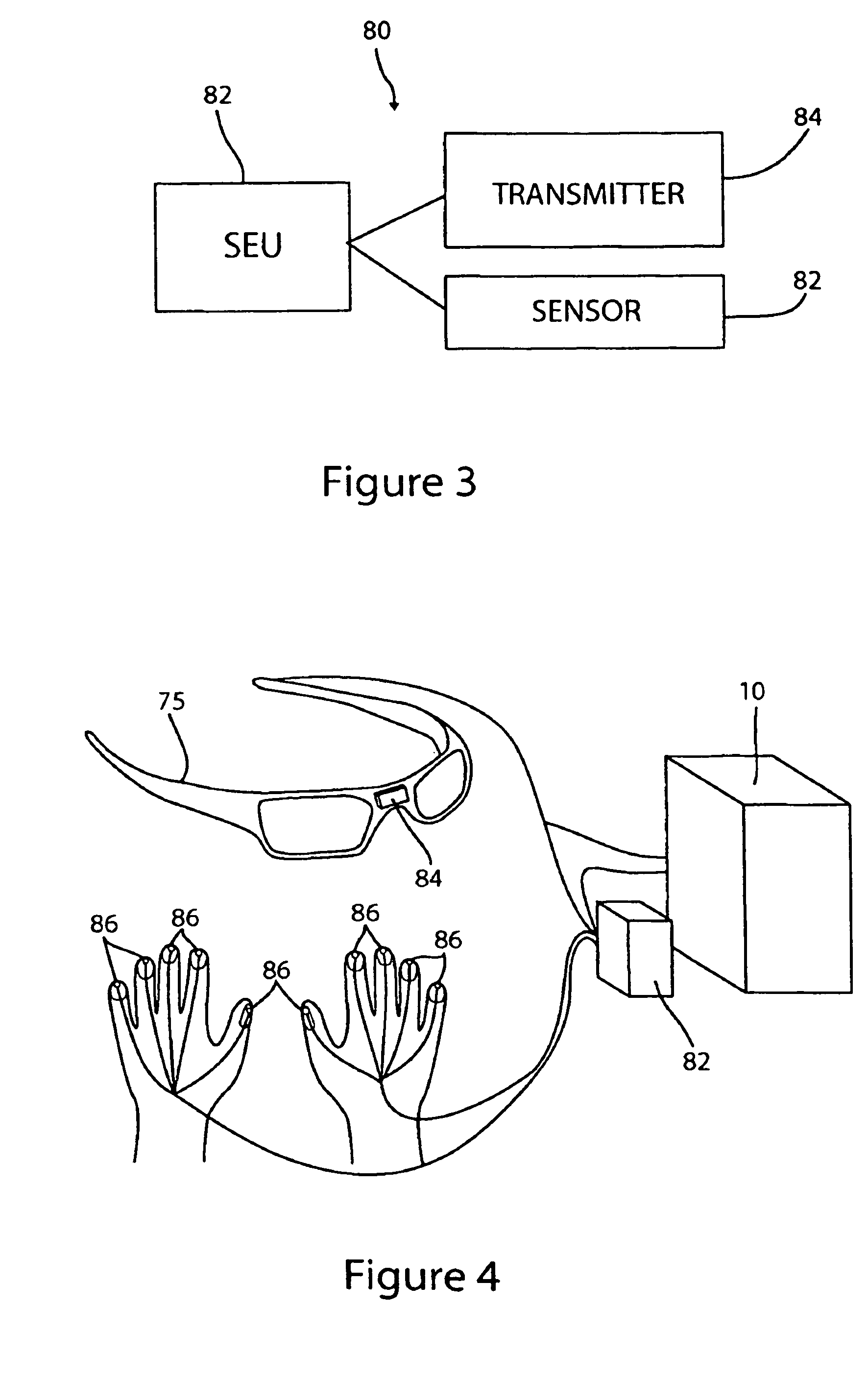While computer keyboards are widely accepted and quite suitable in many situations, keyboards are not always the most efficient, convenient, or easy to use devices.
A drawback of computer keyboards is that they include up to 110 individually marked keys mounted to a base with as many switches.
All of these components must be produced and assembled, which accounts for considerable expense.
Since keyboards are mechanical, are also more prone to failure than
solid-state devices, additionally, due to the likelihood of failure, broken keyboards additionally present disposal problems.
Further, the conventional keyboard cannot be quickly changed to a new
keyboard layout, such as might be desired by those who have learned a
keyboard layout other than the somewhat inefficient but traditional QWERTY
layout.
Another drawback of computer keyboards is that they are built generally in one size for all users.
As a result, users with relatively small or
large hands must adapt to a keyboard size that is not optimal for their particular
hand size.
A person with smaller hands must stretch further to strike a key some distance from a home row of keys, whereas a person with larger hands will have a harder time accurately striking any desired key.
Keyboard size that is optimized for a particular use may lead to decreased hand fatigue.
Since keyboards are produced having only one size forces a user to type with his hands close together in an unnatural manner.
Additionally, as computers become more common in the workplace, a greater number of injuries have been reported due to utilizing a keyboard.
A problem with this type of system is that the user must still physically interact with a surface to generate a
signal.
A problem associated with glove-based systems is that the material from which the glove has been fabricated has a fatigue life, and therefore will eventually
wear out from prolonged usage.
Additionally, a user may experience discomfort from using these types of gloves in that they may perspire inside the glove.
The
perspiration may further lead to degradation of the glove.
A problem with they types of keyboards is that you can only utilize the system on a smooth clean non-transparent steady surface, additionally, if you rest your hands within the projected keyboard the sensor may interpret this motion as keystrokes, thereby resulting in errors.
Further still, since the keyboard is projected onto the surface, the user may experience light interference from surrounding light sources.
Additionally, these devices do not allow a user to customize the
layout of the keyboard or adapt the keyboard to a users specific style of
typing.
In addition to being tethered to a computer, the use of physical input devices may
cause injury to the user.
While this approach may be novel, presently
voice recognition software has not advanced to the point of being reliable enough to replace a keyboard.
Also,
voice recognition software must be custom tailored to each user'
s voice, inflections and / or accents, therefore once a system has been customized to an individual user other user's cannot readily utilize the system.
Another shortcoming of voice recognition systems is that it is difficult to use voice recognition for editing, browsing
the Internet,
graphic design and similar input intensive programs.
Additionally, constant talking may fatigue the user'
s voice, wherein the user's
pitch and tone may change, thereby leading to additional input errors because the voice recognition
software no longer recognizes the user'
s voice.
Further still, voice recognition systems cannot be utilized in cubicle type work environments or similar “open” type environment where
noise interference from other voices may confuse the voice recognition
software.
However, such pointing devices are remarkably ill suited for text
data input.
While the input of alphabetical data is mentioned in the Quick disclosure, only numerical zones are illustrated and it remains unclear how such a device could possibly be used to enter the twenty-six additional characters of the alphabet, especially since the
little finger is used solely for designating an “enter” key and is therefore not available for pointing to
alphanumeric zones.
It is a slow and fatiguing process for people, even those fluent in sign language, to use such devices to enter a large amount of data into a computer, such as might be required while
typing a patent disclosure, for example.
Further, while finger curvature is relatively easy to detect in a variety of sophisticated ways, such detection is only accomplished in one dimension.
This drawback is also evident in many “
virtual reality” data manipulation gloves, which also include a variety of
motion sensors on similar gloves.
As a result, such devices have limited use and are not well suited for prolonged
data entry from a wide selection of character and command keys, such as those found on the standard
computer keyboard.
As previously described, these gloves are generally fragile and are not constructed for constant everyday usage.
Additionally, the gloves are particularly sensitive to
moisture such as sweat from the users hands or a wet environment, wherein
moisture may cause sensor problems or lead to eventual failure of the glove.
 Login to View More
Login to View More  Login to View More
Login to View More 


